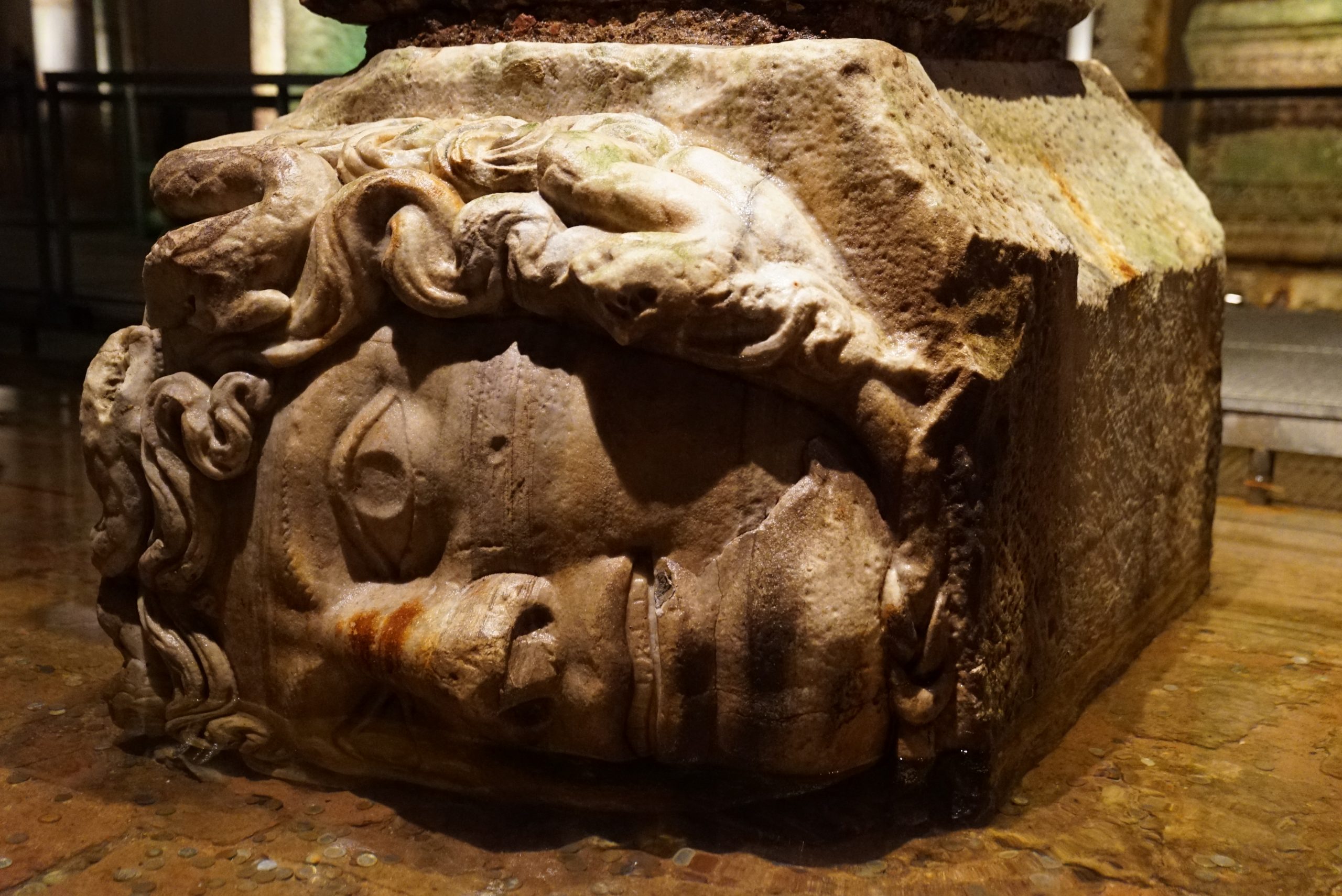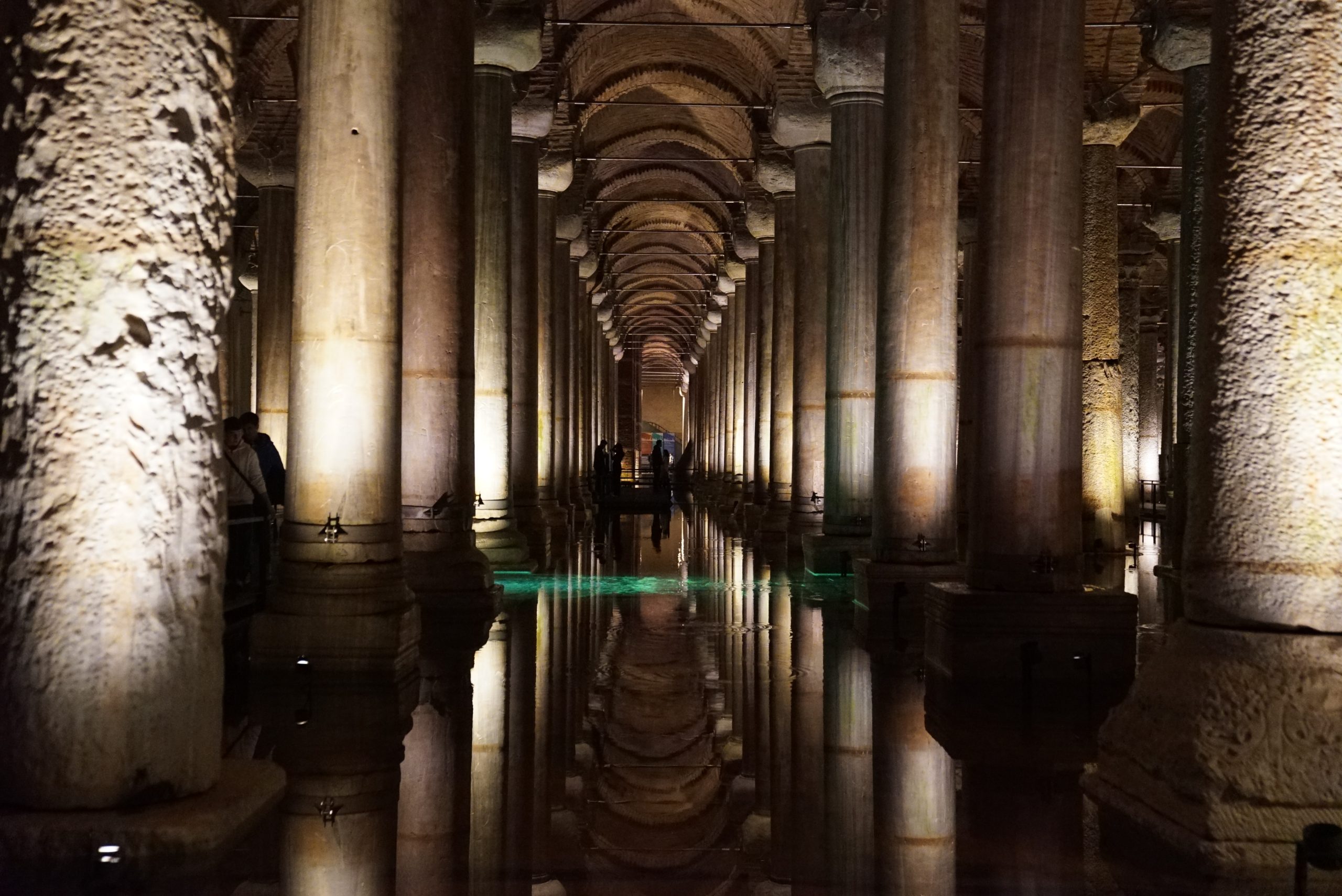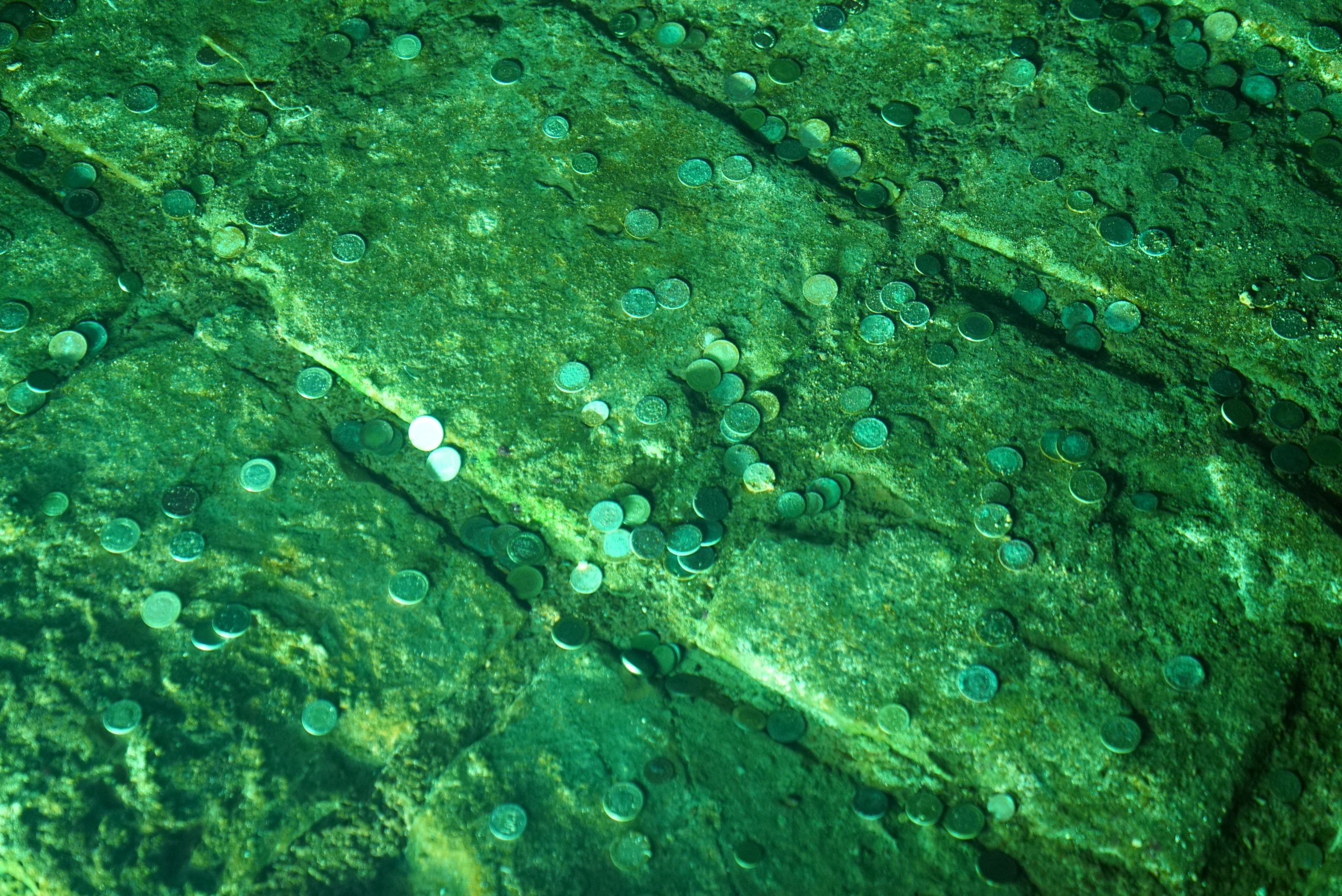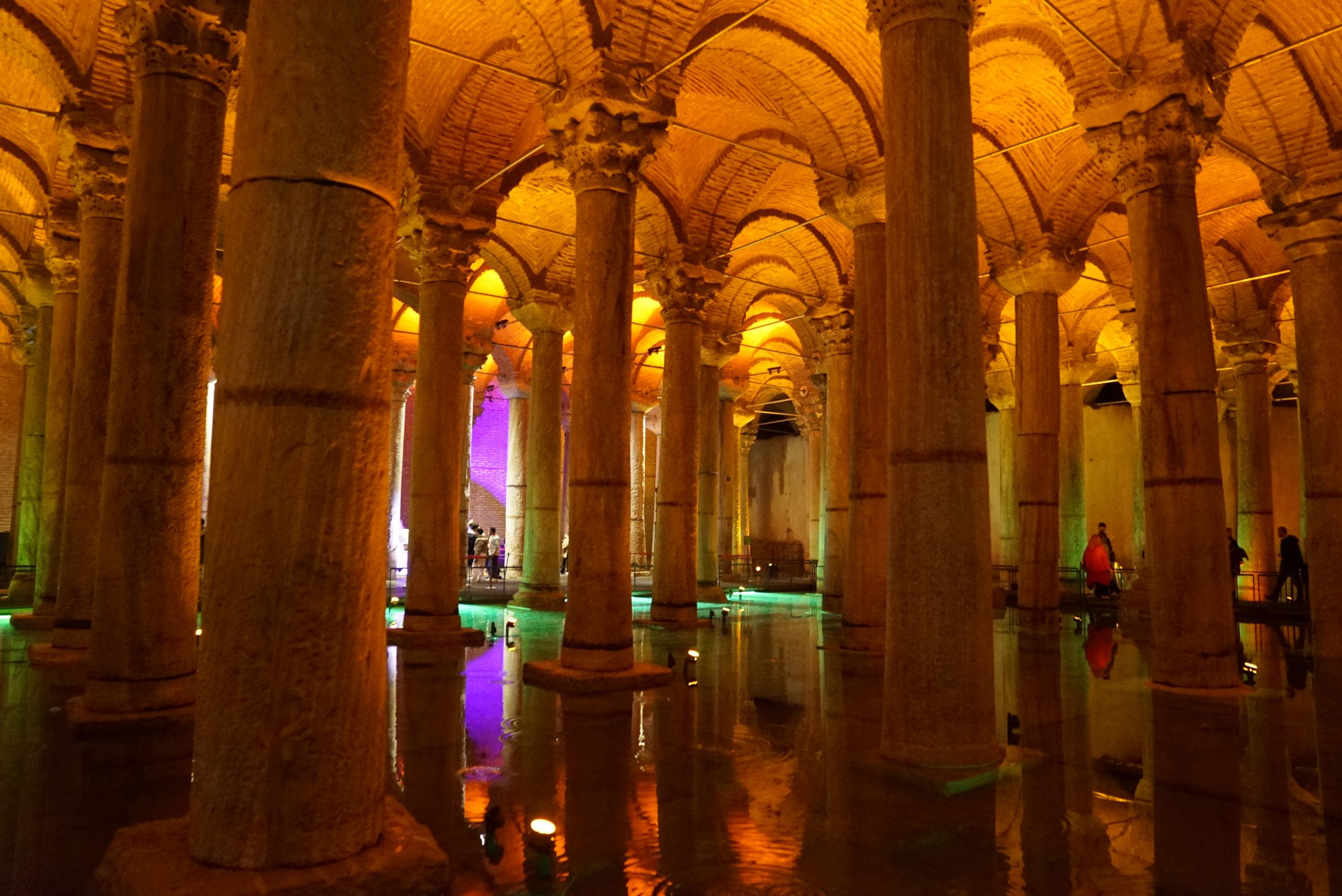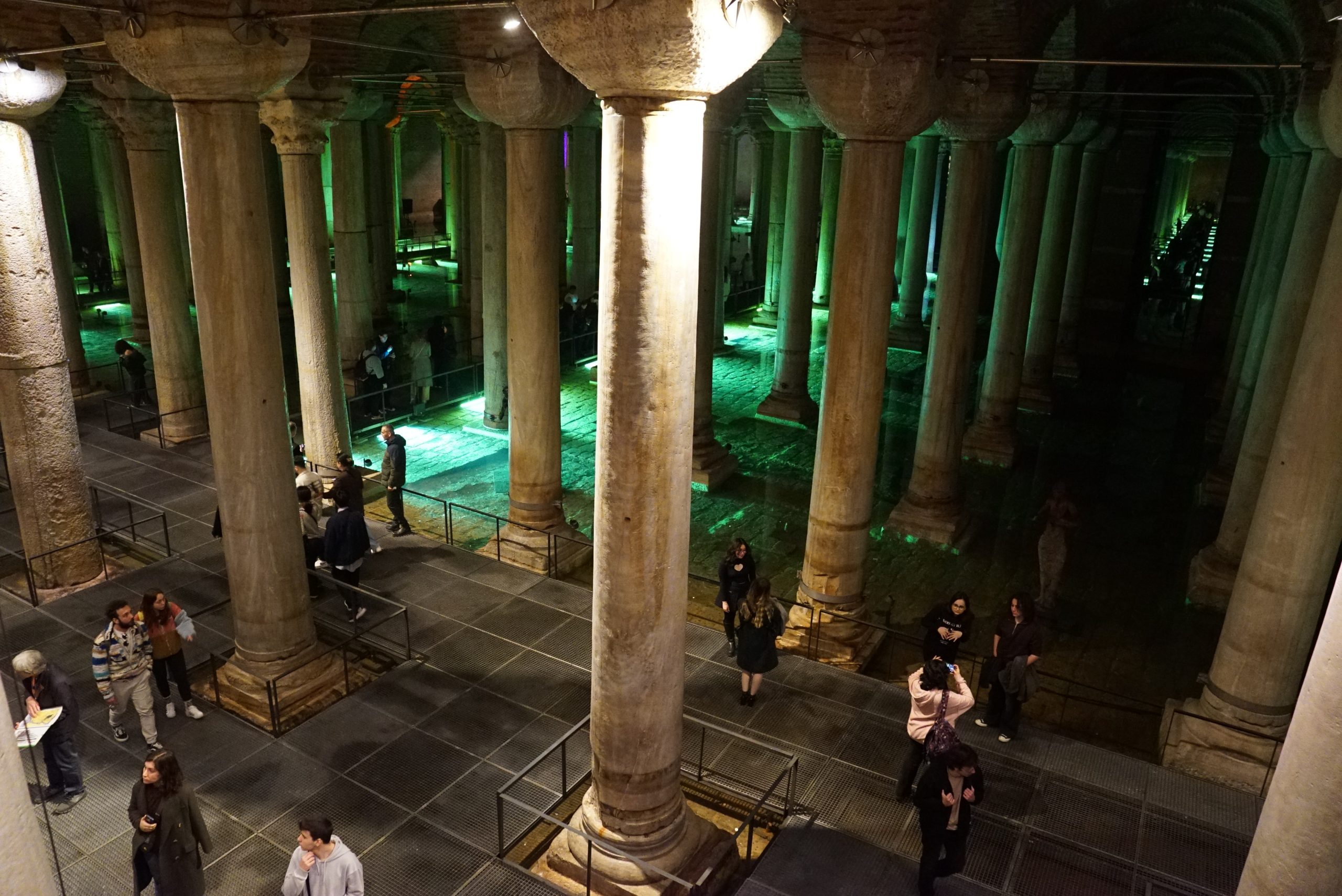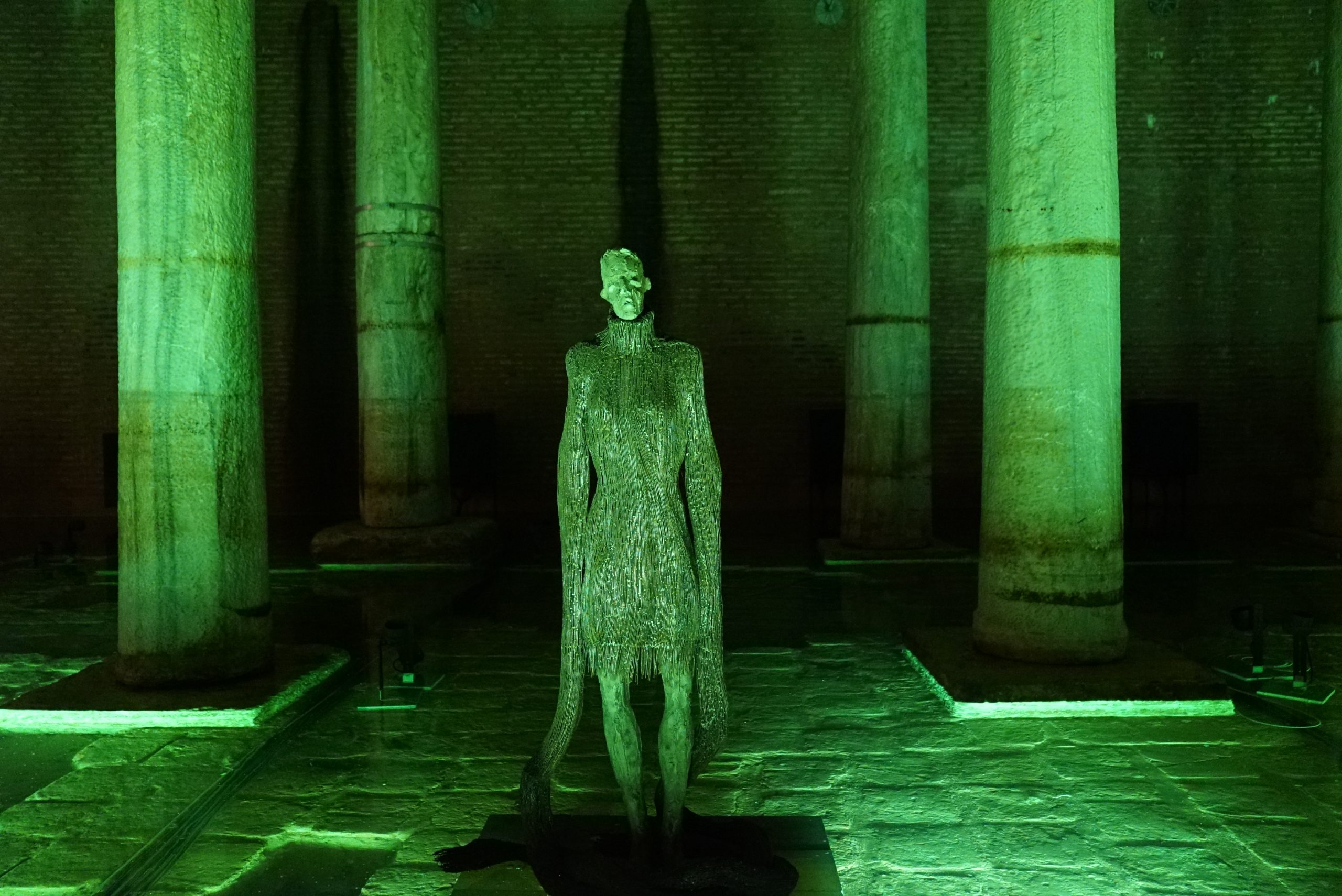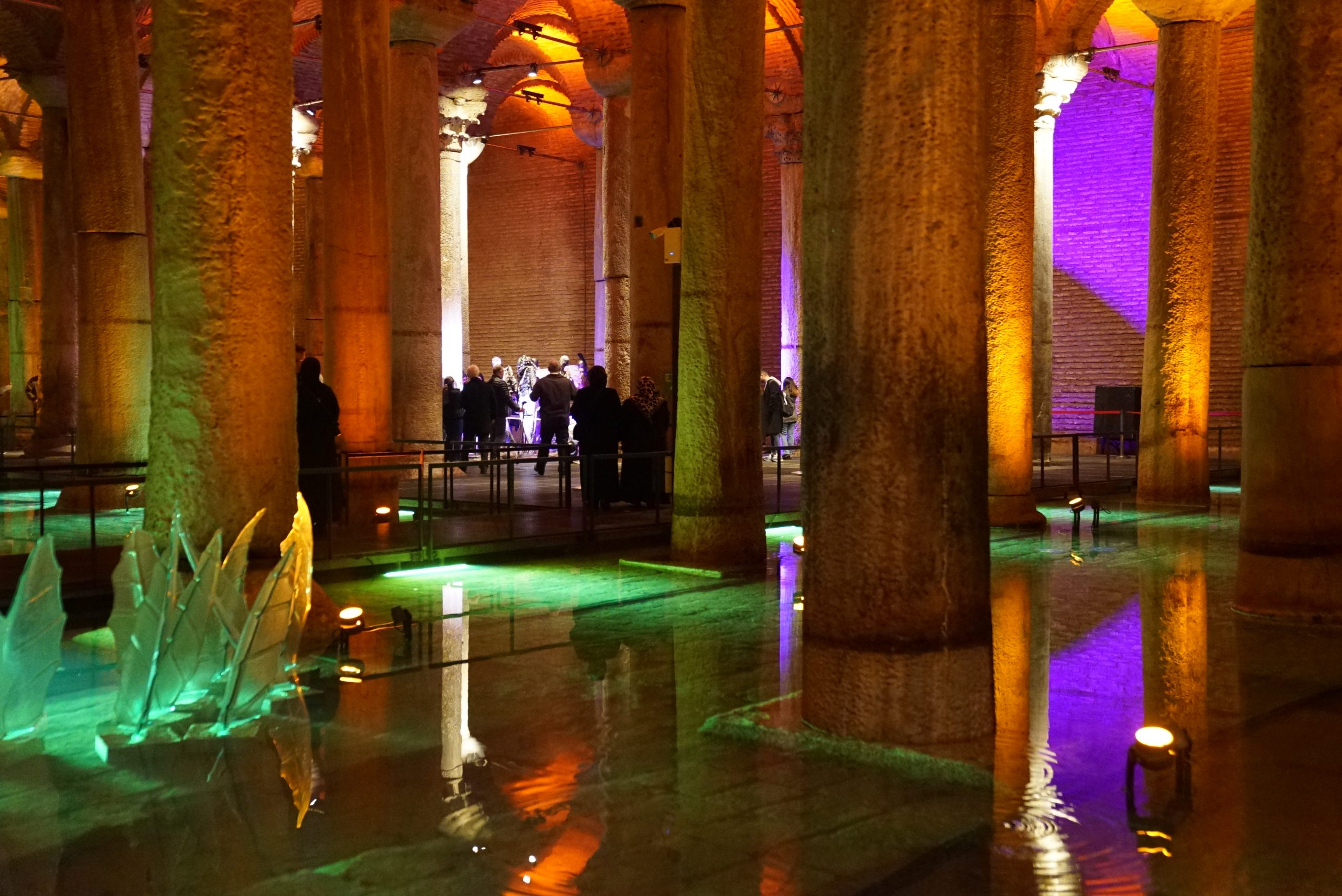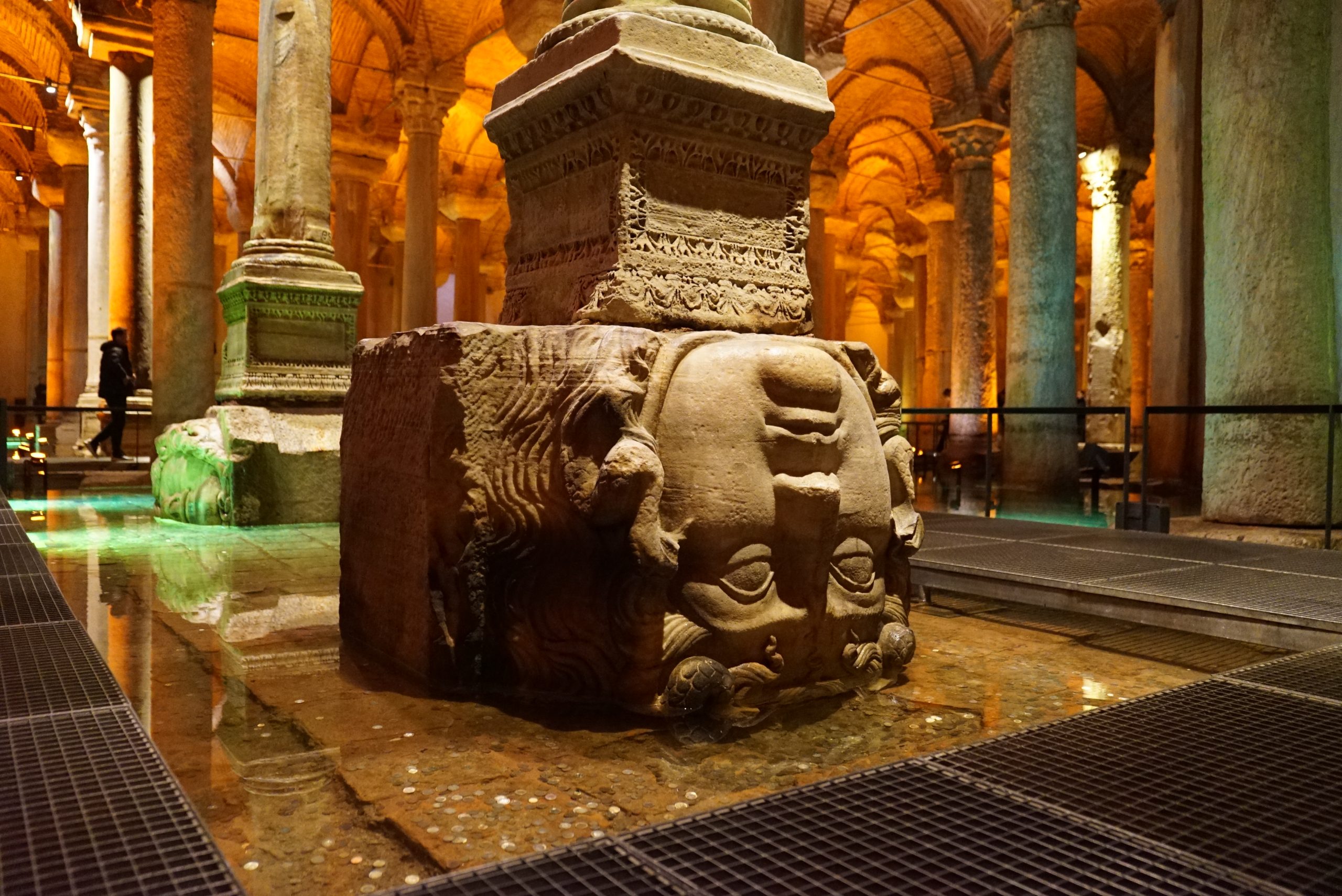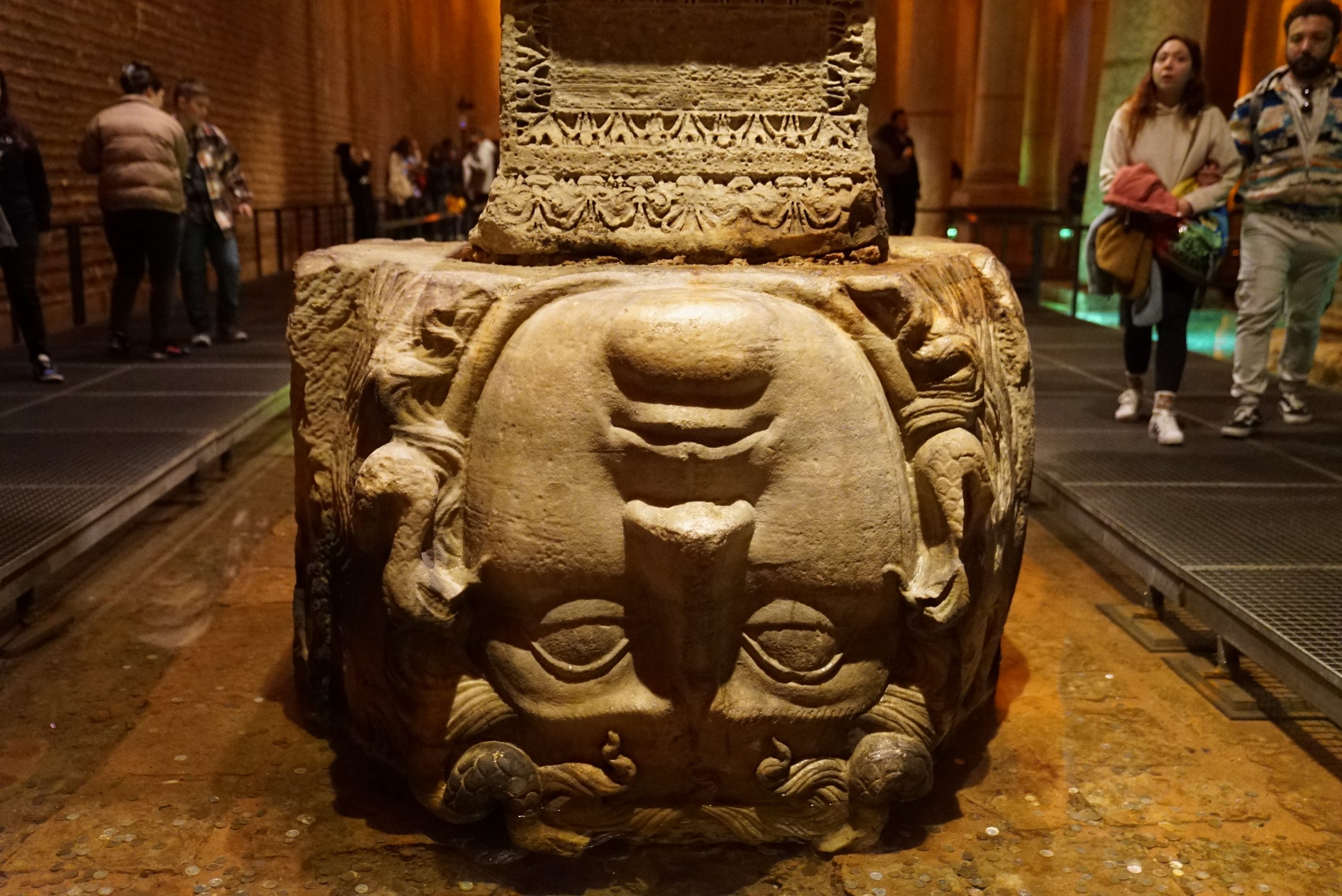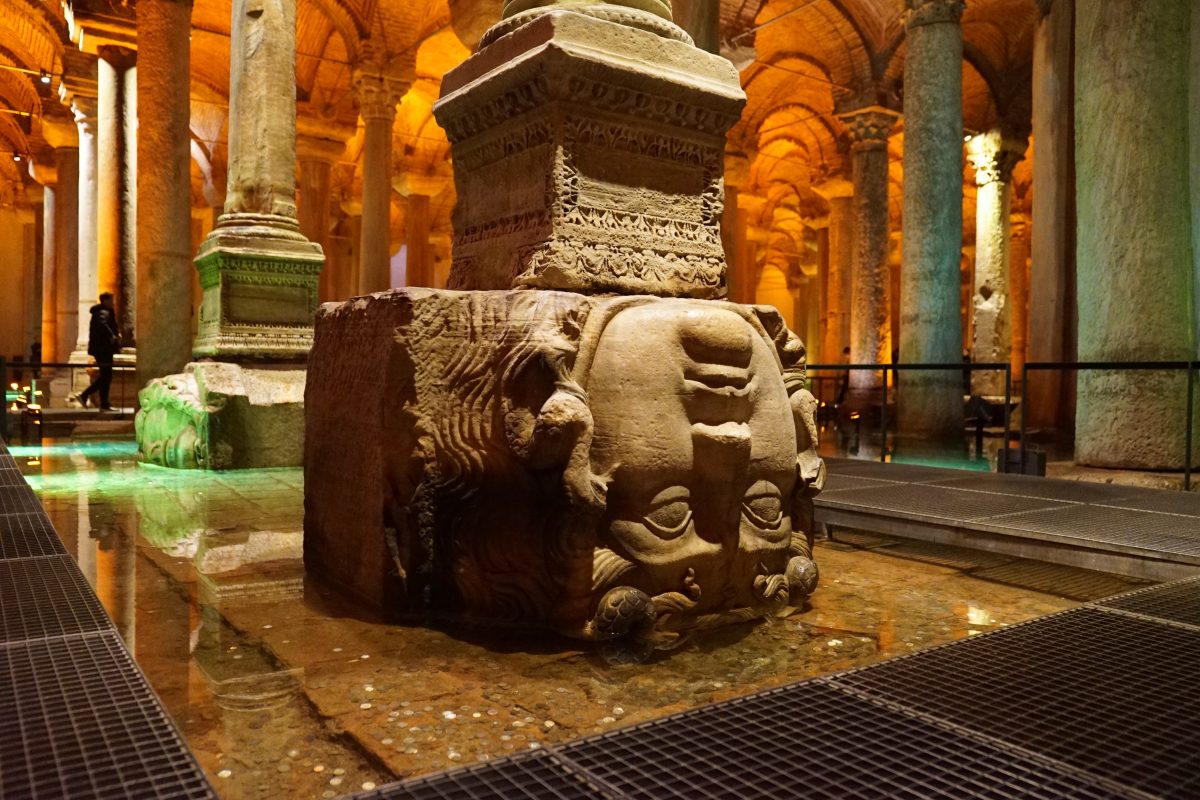On the Trail of History and Legends.Basilica Cistern
Istanbul’s Sultanahmet Street is home to many historically renowned buildings. It is a popular destination for residents as well as tourists, causing it to be crowded most of the time. Numerous museums may be found on Sultanahmet Divanyolu Street. Among these are the Carpet Museum, the Turkish Islamic Art Museum, the Serpent Column, and the 1500-year-old Basilica Cistern, which is located beside Hagia Sophia.
One of the biggest cisterns in Istanbul, the Basilica Cistern is renowned for its stunning architecture and is supported by many columns. The two Medusa heads that are located at the base of two different columns inside the cistern are what really adds to its intrigue. With one head positioned sideways and the other upside down, these are thought to be recycled parts of Roman monuments.
Although the exact cause of the head’s unusual placement is uncertain, I believe it has to do with the Greek mythology that declared Medusa’s glance as one that could turn individuals into stone. It’s possible that the heads were positioned strangely to deflect Medusa’s stare by avoiding the possibility of direct eye contact.
A mystical and captivating atmosphere is created by the Medusa heads, the shallow water, the columns, and the dim light. It is understandable why the Basilica Cistern took 38 years to construct after taking the 52 stairs below ground and seeing the magnificent cistern firsthand. Not to mention the enormity —roughly 10,000 square meters. There are 336 columns within the cistern, each standing nine meters tall. It was the city’s largest indoor cistern at the time, holding 100,000 tons of water.
Water Needs of the City
The story begins in the sixth century, when the Eastern Roman Emperor Justin The First had the cistern built to meet the water needs of Istanbul. Water from the rivers and rainfall was distributed to the Great Palace, and surrounding buildings, meeting the city’s water needs for many years.
Fishing at Home?
The fact that people can occasionally go fishing thanks to the water that pours into the dwellings is the most unexpected fact about the cistern for me. As I was wondering how this could be possible, I discovered that the homes surrounding Hagia Sophia had spherical holes that resembled wells on the ground floor, from which the residents could collect fish and use buckets to draw water. Imagine that your home has a hole in the floor from which you may both extract water and catch fish for dinner that evening. Is that not intriguing?
Even though the system seems functional, it fell into disuse after the conquest of İstanbul. It turns out that after the conquest of Istanbul, people preferred running water to fixed water. Therefore, the cistern fulfilled its purpose when the water facilities were constructed concurrently.
The Western World Introduces the Basilica Cistern
The Basilica Cistern was introduced to the Western world a little late. Petrus Gyllius, a French naturalist and topographer who lived in Istanbul between 1544 and 1555, discovered the cistern and drew attention to it. In his research, Gyllius noted the wells at the top of the structure and reported that the city’s inhabitants drew water from buckets and even fished by illuminating the cistern with oil lamps.
The Legends of Basilica Cistern
The cistern has been the subject of many legends over the years. One of the marble columns of various sizes has become famous as the “Weeping Column”, and it is rumoured that this column was erected in memory of the 7,000 slaves who lost their lives during the 38 years of construction of the cistern.
Another legend concerns the statues known as the Head of Medusa that I mentioned briefly beforehand. The rumour behind their giant appearance is that Medusa is one of the three Gorgonas, the female monsters of the underworld in Greek mythology. The Gorgonas are three sisters, and one of the three sisters is the snake-headed Medusa. Medusa has the power to turn those who look at her to stone. According to legend, the paintings and sculptures of Gorgona were used to protect large buildings and special places of the time.
Two heads of Medusa were placed in the cistern to protect the building. Tehy were discovered in 1987 during restoration work by the Istanbul Metropolitan Municipality. After its discovery, it became one of the masterpieces of Roman sculpture and the symbol of the museum.
New Chapter
After its restoration in 1987, the cistern began to attract local and foreign tourists. During this restoration, a viewing platform was added to the cistern and it was opened to visitors as a museum. In time, it will become a cultural heritage site that will host national and international events.
I learned that the cistern underwent another restoration in 2016. The restoration, carried out by the IMM’s Department of Cultural Heritage, continues with the renovation of the museum, which has been left alone for some time and is now open to visitors.
I leave the most impressive historical site of the 21st century with the memory of the light emanating from the columns, the enormous echo, and the legends spreading. As someone who lives in Istanbul, I am proud to start my Istanbul story by discovering Istanbul.
